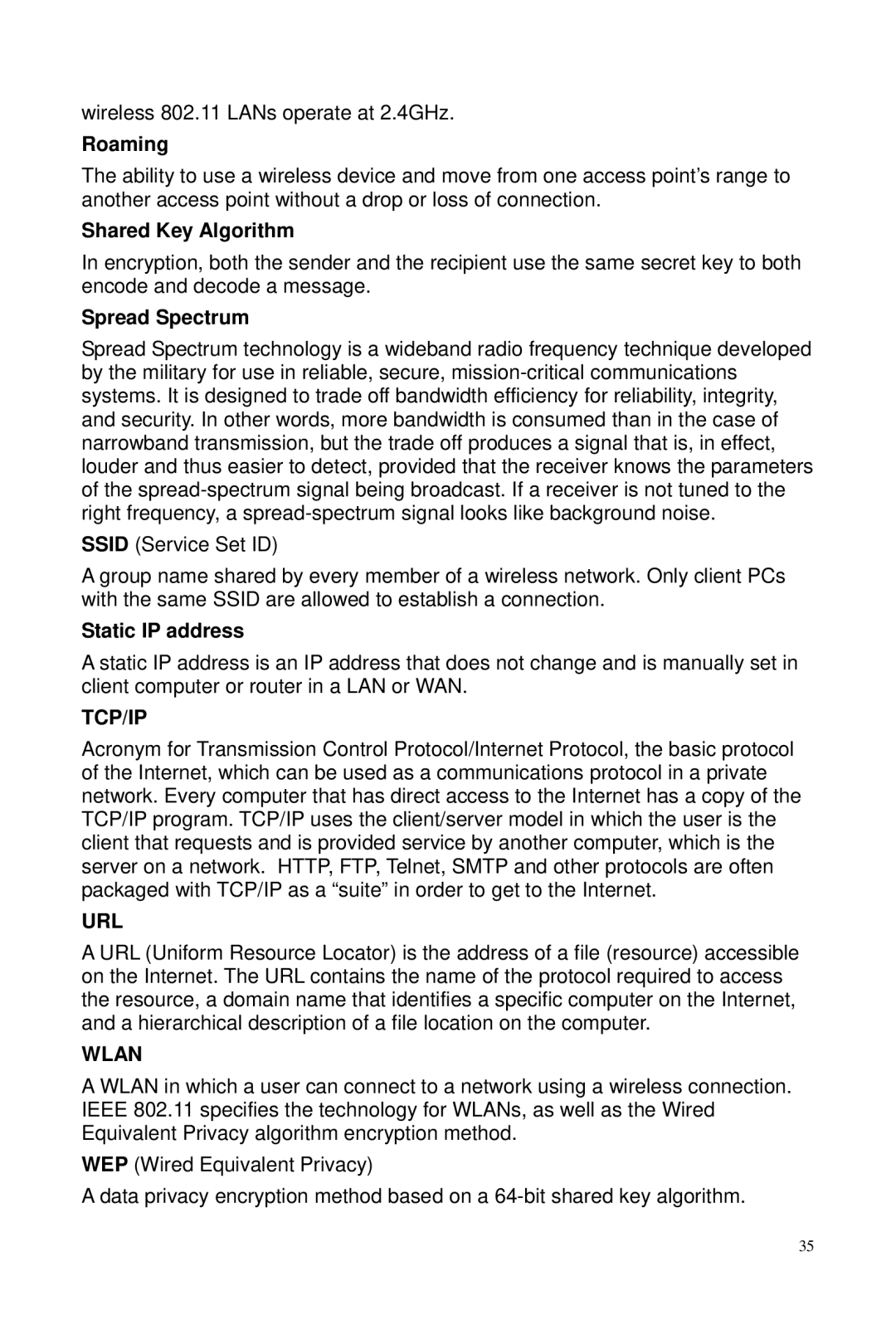wireless 802.11 LANs operate at 2.4GHz.
Roaming
The ability to use a wireless device and move from one access point’s range to another access point without a drop or loss of connection.
Shared Key Algorithm
In encryption, both the sender and the recipient use the same secret key to both encode and decode a message.
Spread Spectrum
Spread Spectrum technology is a wideband radio frequency technique developed by the military for use in reliable, secure,
SSID (Service Set ID)
A group name shared by every member of a wireless network. Only client PCs with the same SSID are allowed to establish a connection.
Static IP address
A static IP address is an IP address that does not change and is manually set in client computer or router in a LAN or WAN.
TCP/IP
Acronym for Transmission Control Protocol/Internet Protocol, the basic protocol of the Internet, which can be used as a communications protocol in a private network. Every computer that has direct access to the Internet has a copy of the TCP/IP program. TCP/IP uses the client/server model in which the user is the client that requests and is provided service by another computer, which is the server on a network. HTTP, FTP, Telnet, SMTP and other protocols are often packaged with TCP/IP as a “suite” in order to get to the Internet.
URL
A URL (Uniform Resource Locator) is the address of a file (resource) accessible on the Internet. The URL contains the name of the protocol required to access the resource, a domain name that identifies a specific computer on the Internet, and a hierarchical description of a file location on the computer.
WLAN
A WLAN in which a user can connect to a network using a wireless connection. IEEE 802.11 specifies the technology for WLANs, as well as the Wired Equivalent Privacy algorithm encryption method.
WEP (Wired Equivalent Privacy)
A data privacy encryption method based on a
35
